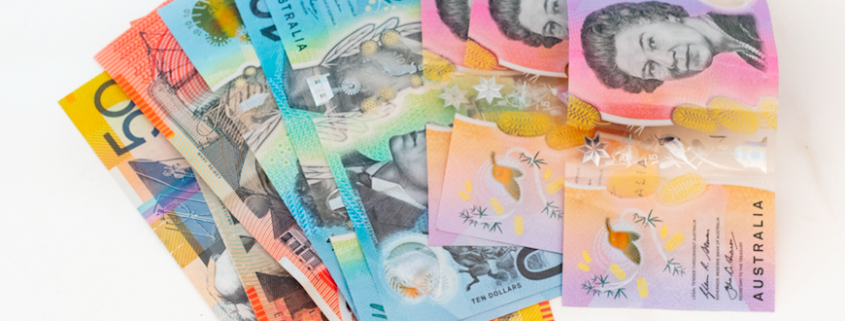JobKeeper payment: what we do and don’t know
The Australian Government’s wage subsidy plan will help more than 6 million people who have seen their income fall because of the Coronavirus pandemic.The JobKeeper scheme gives affected businesses $1500 per fortnight, per employee to help pay the wages of an estimated 6.7 million Australians for six months. Employers need to apply for the wage subsidy. In relation to JobKeeper: what we do and don’t know about the details at this stage are outlined here.
WHAT WE DO KNOW
Employees
· The JobKeeper payment will be $1500 per fortnight.
· Every employee will get the $1500 payment – no matter what your wage/status is (full time, part time or casual).
· To be eligible, an employee needs to be at least 16 years of age and have been employed with the business from 1 March 2020. If you are a casual, you need to have been with the business for at least 12 months (1 March 2019) and been employed on a ‘regular basis’ since then.
· The JobKeeper payment will be available to employees who are Australian citizens, permanent visa holders or on protected special category visas, non-protected special category visas (for those who have resided in Australia for 10 years or more) and special category visa holders (444).
· Both employees who are working, and employees who have been stood down, will be eligible. If you have been stood down, you will not necessarily have to return to work to receive the payment – your employer may require you to work.
· An employee can only receive the JobKeeper payment from 1 employer, that being your nominated primary employer.
· If you are an eligible employee who will receive the JobKeeper payment, but have successfully applied for the JobSeeker payment, you must inform Australian Services that you will now be receiving the JobKeeper payment.
Employers
· To be an eligible business your turnover must be down 30%. If your turnover is more than $1billion it must be down 50%.
· As an employer you must register your interest with the ATO.
· In registering interest, you need to provide the number of eligible employees (including those stood down).
· Once accepted into the scheme, it is your responsibility to administer the JobKeeper payment.
· The normal income tax rules apply when paying employees.
· If registered, you are legally bound to pay each eligible employee, to keep each eligible employee attached to the business and to notify all eligible employees they are receiving the JobKeeper payment.
· The ATO will generally use Single Touch Payroll to pre-populate employee details.
· As an employer, it is your choice whether to pay superannuation on the $1,500 payment.
· The Government will start making the payments from 1 May 2020, backdated to Monday 30 March 2020.
The $1500 is to be paid to each eligible employee each fortnight as follows:
· If an eligible employee worked in the fortnight, and would normally have been paid less than $1500, their pay will be topped up to $1500.
· If an eligible employee worked in the fortnight and earns more than $1500 under the relevant industrial instrument for that work, they will be paid as per normal (ie the $1500 will be absorbed into the payment).
· If an eligible employee has been stood down, they will receive the $1500 payment per fortnight (even if pre-stand down they were only working 1 shift a week, at say $50 for that shift).
· If an eligible employee has been stood down and their normal take home pay was in excess of $1500 a fortnight, it is your choice as an employer as to whether to top this payment up.
WHAT WE DON’T KNOW
There remain some areas of uncertainty around the JobKeeper payment and they are worth keeping in mind.
Can we be assured that the JobKeeper scheme will commence?
The JobKeeper payment has not been legislated, nor have we seen the legislation. A small sitting of Parliament (31 members because of social distancing) will be held to pass the arrangements. The Australian Labour Party have indicated they will support the package. Therefore, it being legislated is relatively assured.
What happens if an employee takes a period of annual leave whilst receiving the JobKeeper Payment?
It would seem that an employee can be on approved leave and still receive the payment (tbc).
Can an employee top up their $1500 payment with some accrued annual leave payments each fortnight?
There is nothing currently in the public domain that suggests an employee cannot receive the payment, plus take annual leave. For example, an employee could take two days of annual leave per week in order to maintain their pre-stood down take home pay (tbc).
If an employee is on parental leave will they be entitled to the subsidy?
There is nothing specific in the public domain about this, although the subsidy PMO Statement states that it will be “for each eligible employee that was on the company’s books on 1 March 2020 and is retained or continues to be engaged by that employer” (tbc).
Will receipt of the JobKeeper subsidy mean that an employee will not be able to seek the Covid-19 early release of superannuation?
The answer to this question is currently unclear. An employee can make an application for early release of superannuation (between $1000 to $10 000 in Y20 and Y21) via myGov.
The ATO criteria to apply for early release, is currently explained (as at 1 April 2020) as follows:
· That you are unemployed.
· That you are eligible to receive a JobSeeker payment, Youth Allowance for JobSeekers, Parenting Payment (which includes the single and partnered payments), Special Benefit or Farm Household Allowance.
· That you were either made redundant; or your working hours were reduced by 20% or more, on or after 1 January 2020.
· If you are a sole trader, your business was suspended or there was a reduction in your turnover of 20% or more, on or after 1 January 2020.
If an employer is registered for JobKeeper are they obliged to start making the payment straight away, or can they wait until the Government backdated payment is made to them on 1 May 2020?
Presumably, a registered employer who has stood down employees, will not be required to make the payment to those employees until the government makes the payment to them (tbc). Some employers may elect to do so whilst others who have cash flow problems would not, and you would think will not be required to (tbc).
How do I know if my business meets the 30% business downturn edibility rule?
Robert Gottliebsen wrote in his article in The Australian (JobKeeper: some tips and traps for business owners and employers on 1/4/20):
“Thirdly, more clarity is need in the JobKeeper package as to when the 30 or 50 per cent decline in turnover applies. At it now stands turnover must have fallen 30 per cent for businesses with turnover under $1bn, or fallen 50 per cent for turnovers over $1 billion, between March 2019 and March 2020.
A vast number of enterprises suffered limited impact in March because of payments that came from past contracts. But they know their revenue will be slashed in April, May and June and are planning major staff reductions. JobKeeper is a huge and complex program and it can’t be handled by the ATO on a case-by-case basis. There must be clear rules so that enterprises can estimate their turnover declines across April, May and June. There must be extended repayment schedules for those who get those estimates wrong.
And those working on an estimates basis will need reporting rules that confirm those estimates. Clarity here is needed urgently. Thankfully the indication I have received from Government is that clarity is on the way.”
I trust you find this information useful. If you have any additional questions on JobKeeper, please feel free to email me at ross@workrelations.com.au


